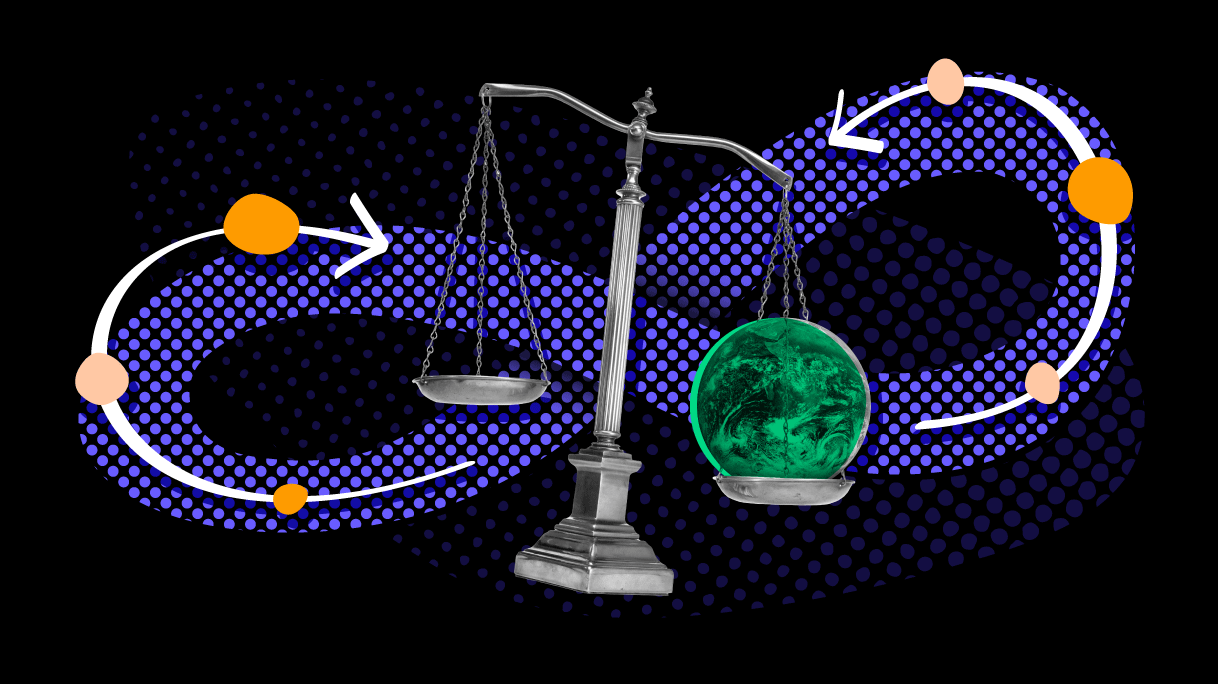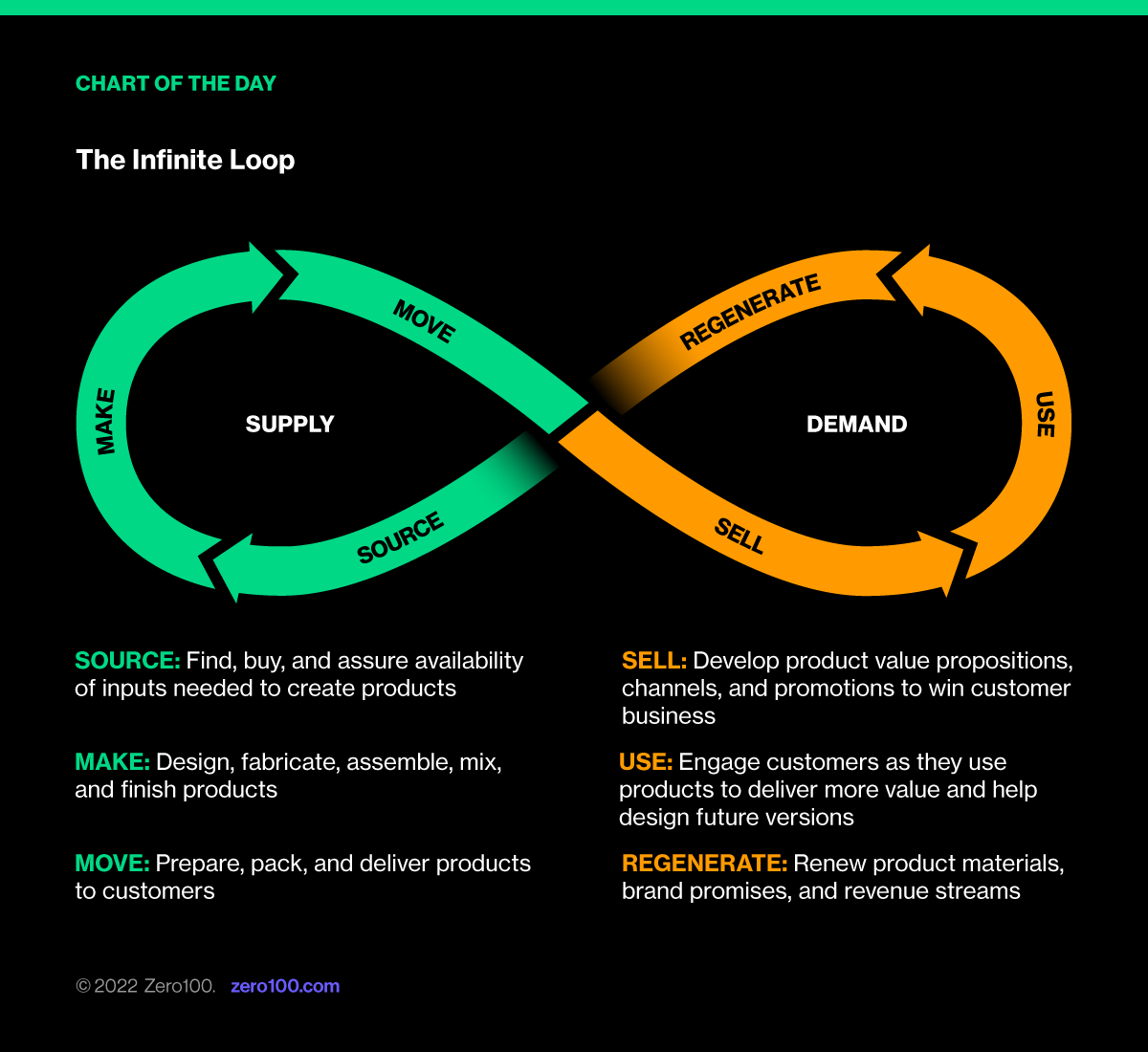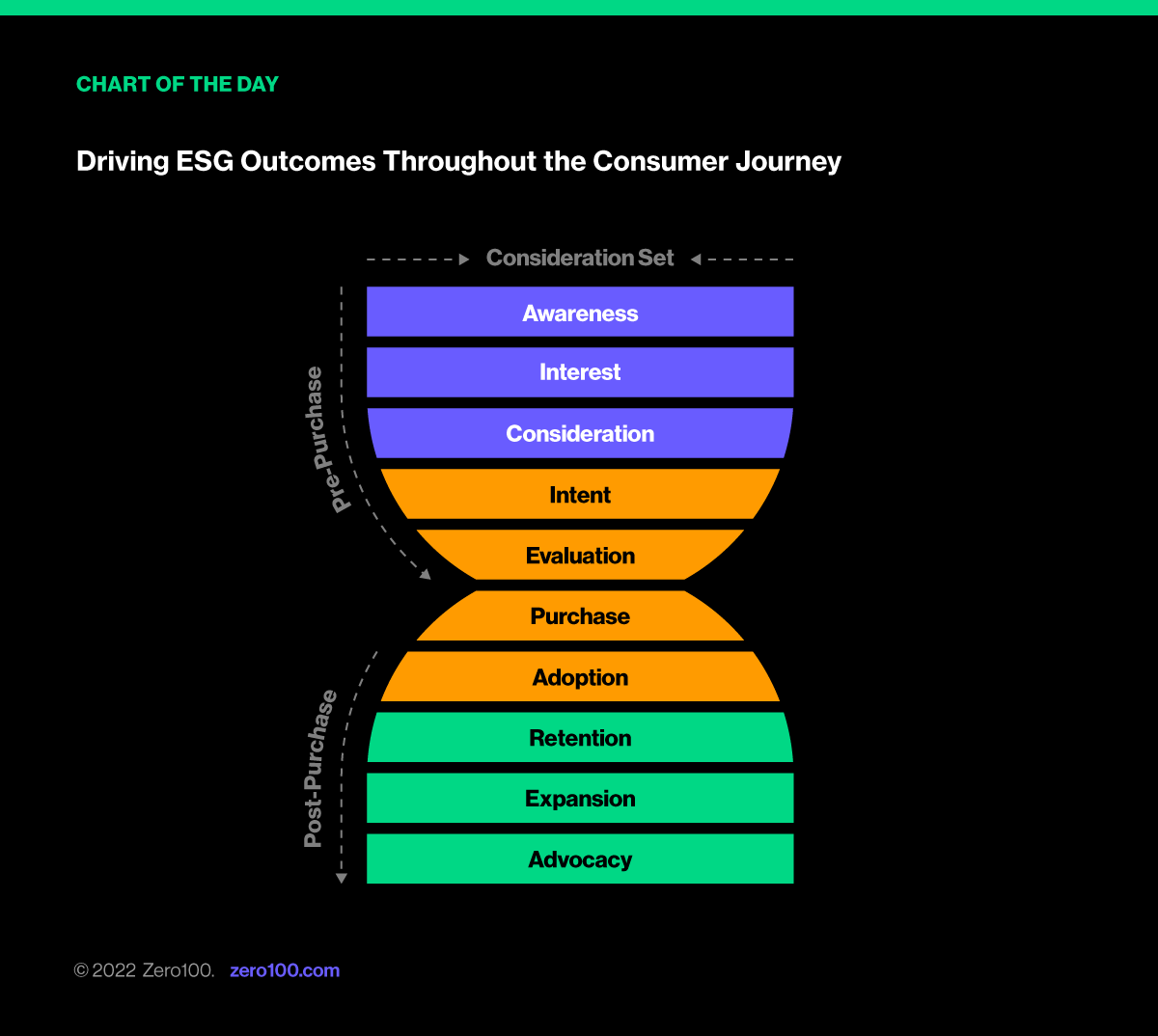
New Research: Demand Driven to Zero Carbon
Zero100’s latest research report explores how supply chain leaders can map the current power imbalance favoring customer demand, with the intent of building a roadmap to 100% Digital, 0% Carbon supply chains.
Restoring Balance
It's undeniable—the digital era has propelled customer expectations of choice, speed, and cost to a point where demand-side pressures are overwhelming the ability of supply-side functions to cope and deliver on brand promises. Worse, this power imbalance is pushing supply chains to overheat not only our operations, but also our people and the planet. The critical question facing supply chain leaders is, put bluntly: How can we step up and drive change fast enough to matter?
Zero100's latest research report explores how supply chain leaders can map this imbalance and build a practical roadmap to 100% Digital, 0% Carbon supply chains.
Traditional supply chains were set-up to extract materials, manufacture at scale, move products efficiently, and cater to customers' insatiable demand for faster fulfillment in the ascendent age of e-commerce. As recent supply chain crises demonstrate over and over, the current model is proving unsustainable. To reconcile demand-side pressures against supply-side constraints, we need two things:
- A new formulation of supply chain that extends beyond customer delivery all the way back to source.
- A better understanding of where customers can be empowered to make impactful, ESG-positive decisions.
The Infinite Loop
Linear thinking has dominated supply chain orthodoxy to our collective detriment. By not extending traditional supply-side functions beyond point-of-sale—and including the potential renewal of product materials, brand promises, and recurring revenue opportunities—we lose sight of critical inputs that challenge the status quo.
As Zero100 survey data confirms by a 2:1 margin, supply chain professionals already acknowledge the tilting imbalance in favor of demand chains. To that end, there is an urgent need for a new framework that can help diagnose critical bottlenecks, identify points of failure, and implement corrective measures.
If we challenge linear thinking by stitching together supply chain functions with their corresponding demand chain functions in an “Infinite Loop,” we begin to see the bigger opportunity. We can move past merely delivering to customers and start empowering them, thereby establishing the supply chain they want. This means not only engaging at the moment-of-truth when customers make a purchase decision, but throughout and across the full lifecycle experience of using our products—ultimately extending to “regenerating” both the materials used and brand promises made.

The Consumer Journey
To that end, Zero100 survey data further suggests that nearly 40% of supply chain professionals believe their customers are willing to pay more for ESG-positive products. Willingness aside, this requires an alignment of customer desire and opportunity for action.
Coincidently, our visualization of the supply chain is changing in tandem with our basic conception of the consumer journey. From 1924 onward, marketers have been depicting the consumer journey in terms of a narrowing purchase funnel. Prospects do their research and reduce their overall consideration set (pre-purchase), make a buying decision (purchase), and assess their ongoing use of the ultimate brand/product selection (post-purchase). Generally-speaking, the overall effort that went into the original decision calculus was time-consuming and costly enough to cement loyalty (absent a terrible product experience or far cheaper substitute).
Digitization challenged that model. The funnel suddenly transmogrified into an hourglass. In effect, loyalty became much less assured when customers were granted instant access to verified product reviews, unboxing videos, community forums, and price comparison engines. Re-evaluation became cheap, convenient, and continual. Sound familiar?

Consumer Engagement in Zero Carbon
As digital tools reduce the cost to dis-intermediate a competitor and secure customer defection, it's critical to map where escalating interest in ESG can be better leveraged—effectively bridging supply chain functions and brand marketing disciplines.
Zero100 has identified three primary avenues of such engagement:
- Celebrate people for curating their personal supply chain
Validate and reinforce how consumers' choices contribute to distinct ESG goals, which differ from customer to customer. See Amazon's Aware private-label brand or Stipe Climate program for prime examples. - Show chain-of accountability at point of sale
Provide greater transparency into the tradeoffs between similar products or services during the final stages of consideration. Review Doconomy's 2030 calculator or Google Flight's carbon emission calculators for recent innovations. - Pitch renewable revenue deals that minimize waste
Enable the customer to extend positive choices that enhance or extend positive ESG outcomes. Both HP's Forest First subscription plan or Net-a-Porter's partnership with Reflaunt's resell service demonstrate counterweights to products with high dump rates (ink cartridges and apparel, respectively).
To learn more, download a sample of our latest Research Report.
Note: The gated version of the report is available to all members of the Zero100 Community through their sign-in credential.